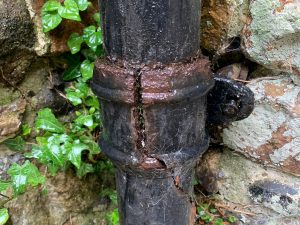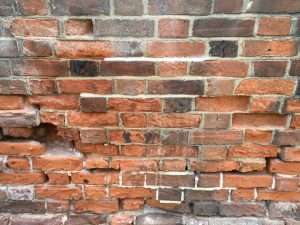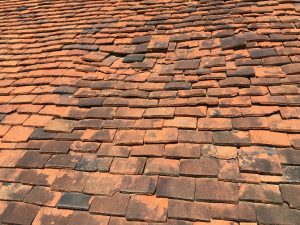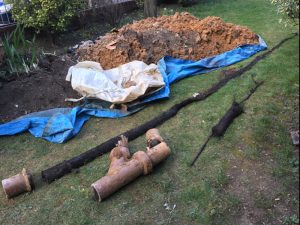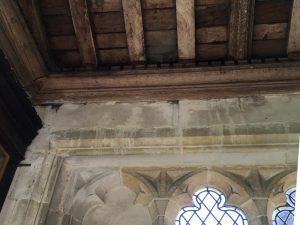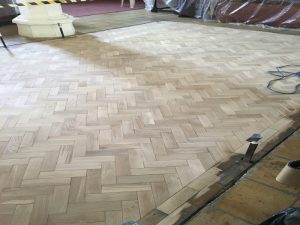


MossClear
Moss on traditional roofs has been the subject of unwarranted debate for many years. Thankfully, excessive moss growth is now more often recognised as a problem and the primary cause of accelerated dilapidation to roof tiles, fixings and timber battens.
We regularly encounter church roofs that are heavily laden with moss growth and there’s little doubt that a rural church with a covering of moss is a charming sight, and it is somewhat fitting to see what is invariably the oldest building in a landscape being populated by one of the very first plants to leave its algal origins behind and colonise dry land some 1/2bn years ago.
Unfortunately, excessive moss growth alarmingly speeds up the deterioration of plain clay roof tiles, which often leads on to secondary dilapidations. Moss can hold far more than its own weight in water (up to 20 times as much) and it is this that can lead to the most obvious problems. The retained moisture can permanently saturate areas of the roof in the later part of the year, this then freezes and thaws throughout the winter months leading to increasingly serious tile spalling. We find that fragments of spalled roof tiles and tile grit not only indicate serious decay to the roof fabric but are also the most common cause of serious blockages to downpipes and gully trap drainage as they do not break down to be flushed away during times of heavy rainfall like small quantities of organic matter.
There are many solutions to the problem of moss growth and even more companies springing up to promote them judging by the number of pamphlets being delivered to residential homes. In short, we would advise against the use of high pressure cleaning equipment or the use of vast quantities of herbicides to clear Church roofs. Not only are the chemicals extremely damaging to the environment – especially our watercourses – but high pressure cleaning can be extremely harsh. We would simply recommend that extensive moss growth is manually brushed from the tiles in a delicate and sympathetic manner as part of an ongoing maintenance schedule and treatment to kill off residual rhizoids and spores be conducted with an eco-friendly product.

